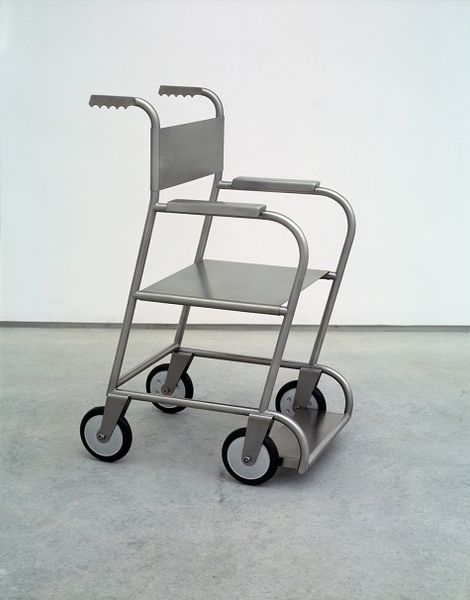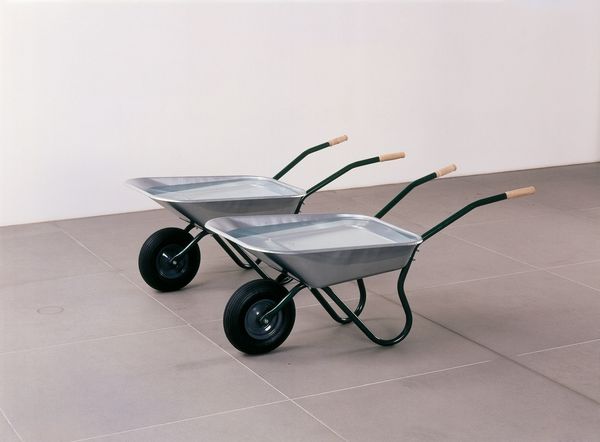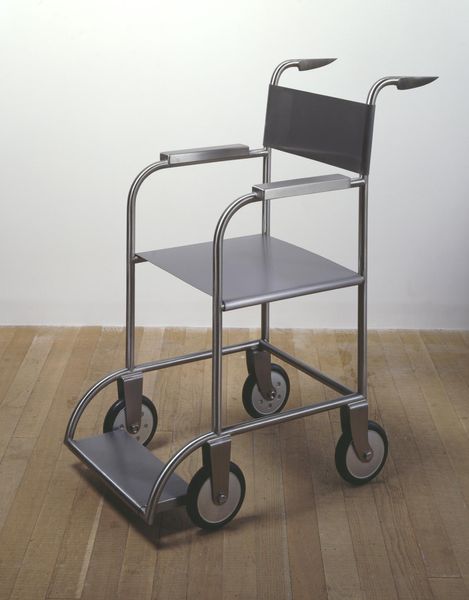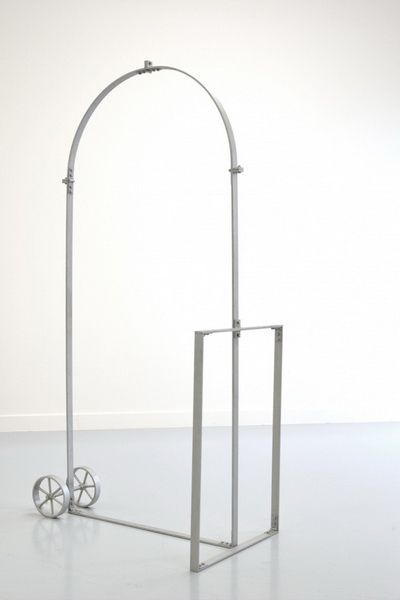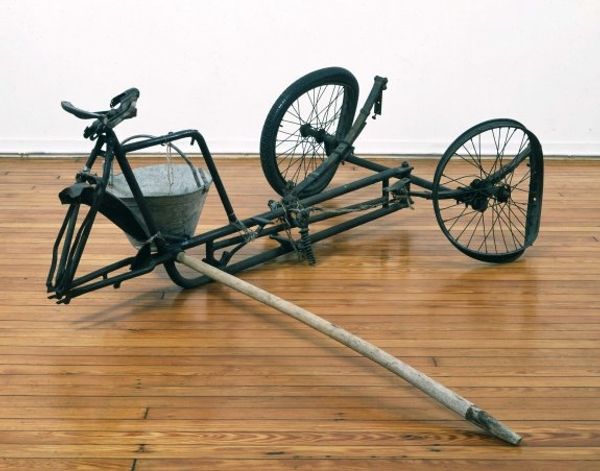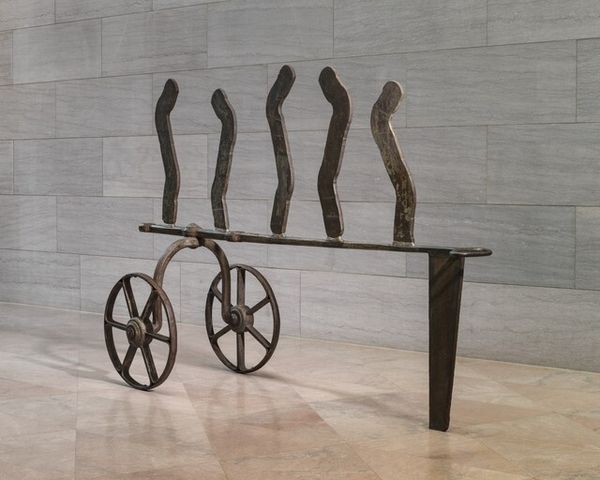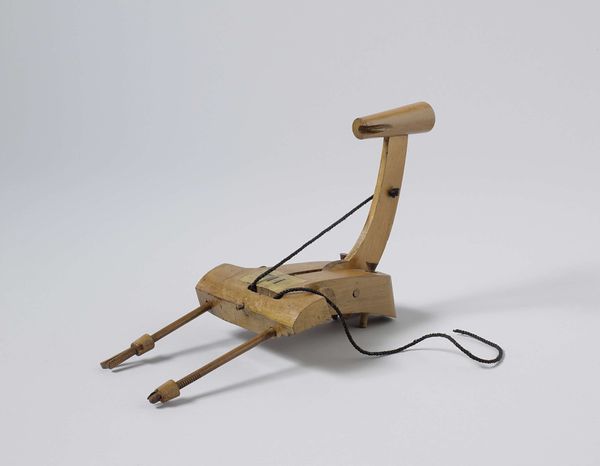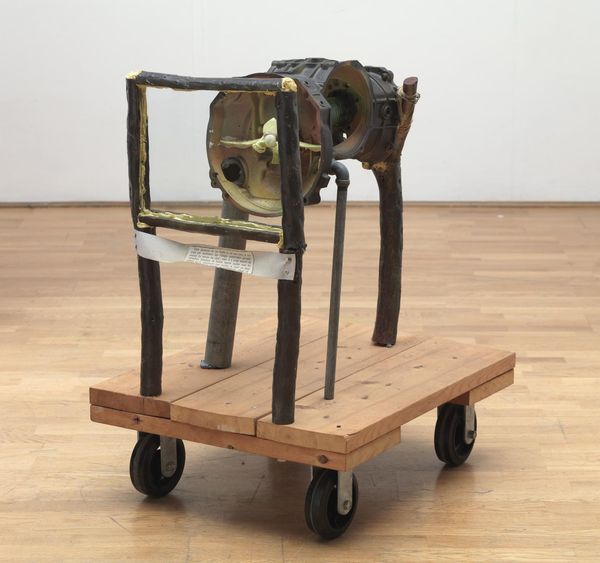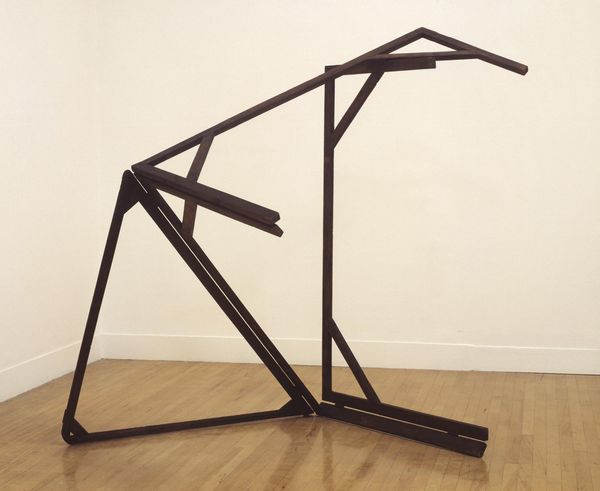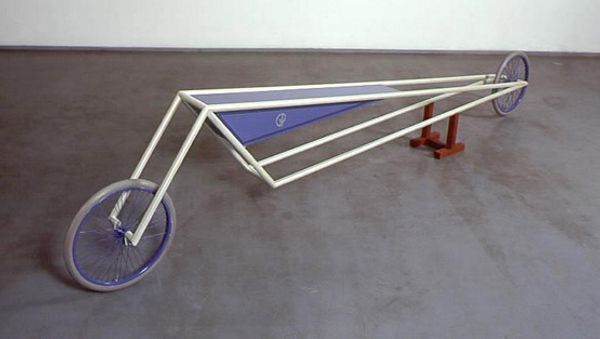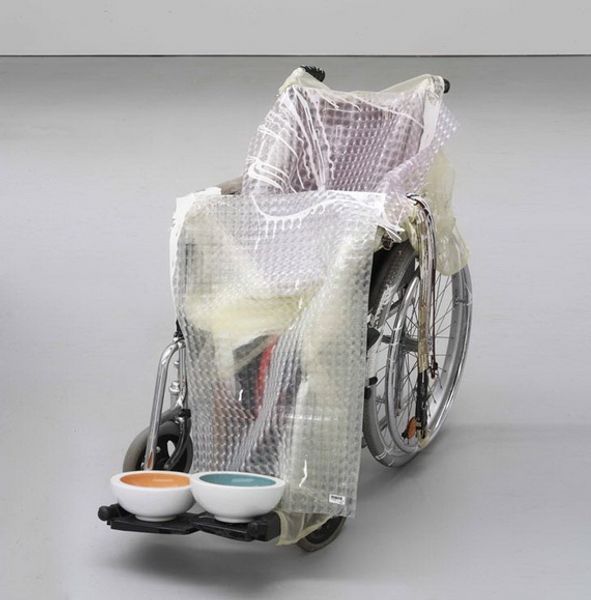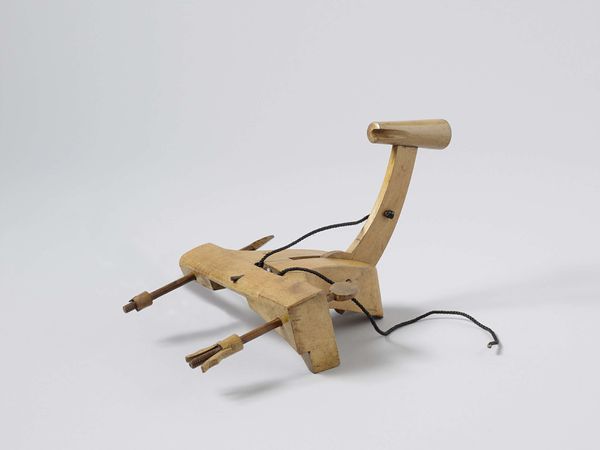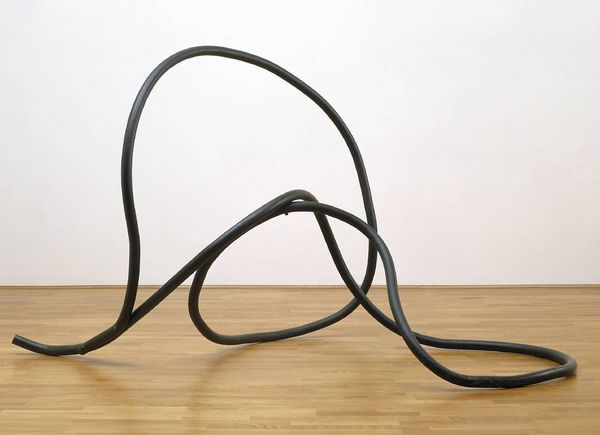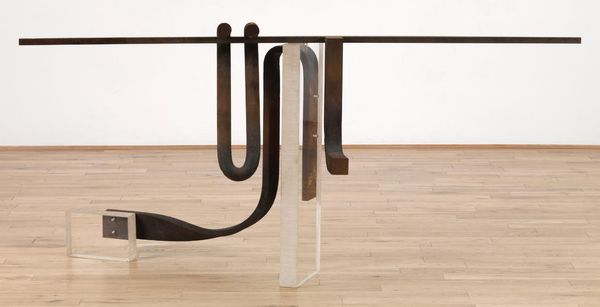
Dimensions: object: 2140 x 1175 x 2875 mm, 1300 kg
Copyright: © The estate of David Smith | CC-BY-NC-ND 4.0 DEED, Photo: Tate
Editor: This is David Smith's "Wagon II," a large steel sculpture at the Tate. It's… surprisingly whimsical for such a weighty object! What do you make of its composition? Curator: Its formal arrangement presents an intriguing interplay of vertical and horizontal elements. Note the stark contrast between the robust, almost cartoonish, wheeled base and the slender, upright form. Does this juxtaposition suggest a tension between groundedness and aspiration? Editor: I see that now! The base does seem very grounded, but the top part is reaching. How does the materiality of steel play into this? Curator: Precisely. The industrial nature of the steel lends a sense of monumentality, yet the open structure and curvilinear forms introduce a lightness, a visual paradox. I find the artist’s manipulation of form and space highly compelling. Editor: I agree. I hadn't considered how the choice of material amplifies these visual contrasts. Thanks! Curator: A keen observation; these contrasting formal elements create the sculpture's unique visual language.
Comments
Join the conversation
Join millions of artists and users on Artera today and experience the ultimate creative platform.
tate 6 months ago
⋮
Smith made a series of three Wagon sculptures while living in a farmhouse in upstate New York. Surrounded by fields and forests, he began to create forms that reflected his rural surroundings. Discussing the incorporation of wheels into some of his large-scale sculptures, he wryly commented: 'my sculpture is getting too big to move without built-in rolling'. He was also interested in the symbolism of the wheel, which for him evoked the sun, Indian temple architecture, and man's first technological achievements. Gallery label, August 2004
